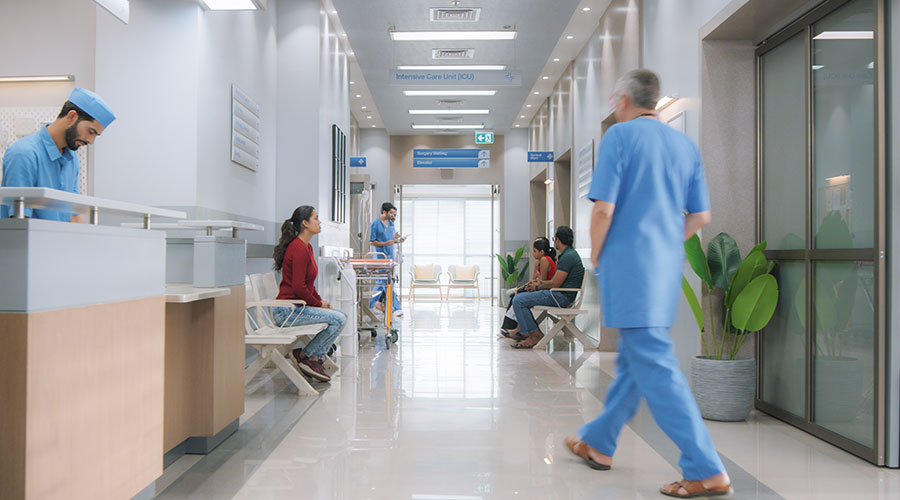Biophilic elements are being installed in hospitals and other healthcare facilities at a rapid rate due to the calmness and healing energy it brings. When incorporating greenery, though, it is crucial that designers choose pieces that will last in a healthcare environment. While designers could always choose fake plants, more are opting for the real thing. When doing this, though, there has to be a specific way to ensure that the plants remain healthy in order to help bolster a healing environment. Healthcare Facilities Today recently spoke with Megumi Hironaka, Sustainable Design Leader, HED on how to integrate biophilia specifically within a healthcare facility’s architectural layout and what plants are best suited for these buildings.
HFT: How can biophilic design be integrated into the architectural layout and spatial planning of healthcare facilities?
Hironaka: How you integrate biophilic features is going to be dependent on your site, the intended use of the facility, and its users. Orienting the building efficiently to harness the sun and shade for cooling and heat, the intent for solar panels on the facility or even in the parking areas, orienting for water capture and reuse, sustainable native plantings, green roofs or roof gardens, the façade materials used, whether it is a four-seasons climate, potential for views or daylighting, opportunities for outdoor movement or using outdoor spaces, there are too many opportunities to fully list.
HFT: Are there any specific plant species or natural materials that are particularly well-suited for biophilic design in healthcare settings?
Hironaka: We’re constantly seeing innovative finishes, including mycelium-based flooring, getting more attention in biophilic design. Natural materials aren’t always the right fit. In those case cases, we focus on reclaimed materials to limit environmental impact, particularly carbon footprint. For plants, hardy varieties including Zanzibar gems and sansevierias are well suited for indoor biophilic design.
When designing to be biophilic, healthcare facilities should use natural materials with low embodied carbon including cotton, rammed earth, linoleum, cork, stone and clay. Through selecting natural resources as a building material, we can help to reduce carbon footprint in the manufacturing process and at the end of the materials’ life.
HFT: Are there any cost considerations associated with implementing biophilic design in healthcare facilities, and how can they be addressed?
Hironaka: There is a misconception that biophilic design adds exorbitant costs – which can be shortsighted. Biophilic elements do not have to add significant costs to a building. Even for biophilic design features that result in additional initial cost, most high-performance design strategies are cost neutral. These design decisions will provide savings over the lifetime of the high-performance equipment systems or the facility itself. Choosing natural materials and biophilic design additions can lower the lifetime operating costs of buildings by reducing energy consumption and reducing maintenance cost.
Biophilic design is also often a key contributor to certification systems like LEED, BREEAM or WELL, which provide guidelines for measuring the sustainable designs and wellness features of a project. This encourages a positive impact on the health and wellness of inhabitants, surrounding communities, and the environment.
Mackenna Moralez is the associate editor of the facilities market.

 Case Study: How NYU Langone Rebuilt for Resilience After Superstorm Sandy
Case Study: How NYU Langone Rebuilt for Resilience After Superstorm Sandy Frederick Health Hospital Faces 5 Lawsuits Following Ransomware Attack
Frederick Health Hospital Faces 5 Lawsuits Following Ransomware Attack Arkansas Methodist Medical Center and Baptist Memorial Health Care to Merge
Arkansas Methodist Medical Center and Baptist Memorial Health Care to Merge Ground Broken on Intermountain Saratoga Springs Multi-Specialty Clinic
Ground Broken on Intermountain Saratoga Springs Multi-Specialty Clinic Electrical Fire Tests Resilience of Massachusetts Hospital
Electrical Fire Tests Resilience of Massachusetts Hospital